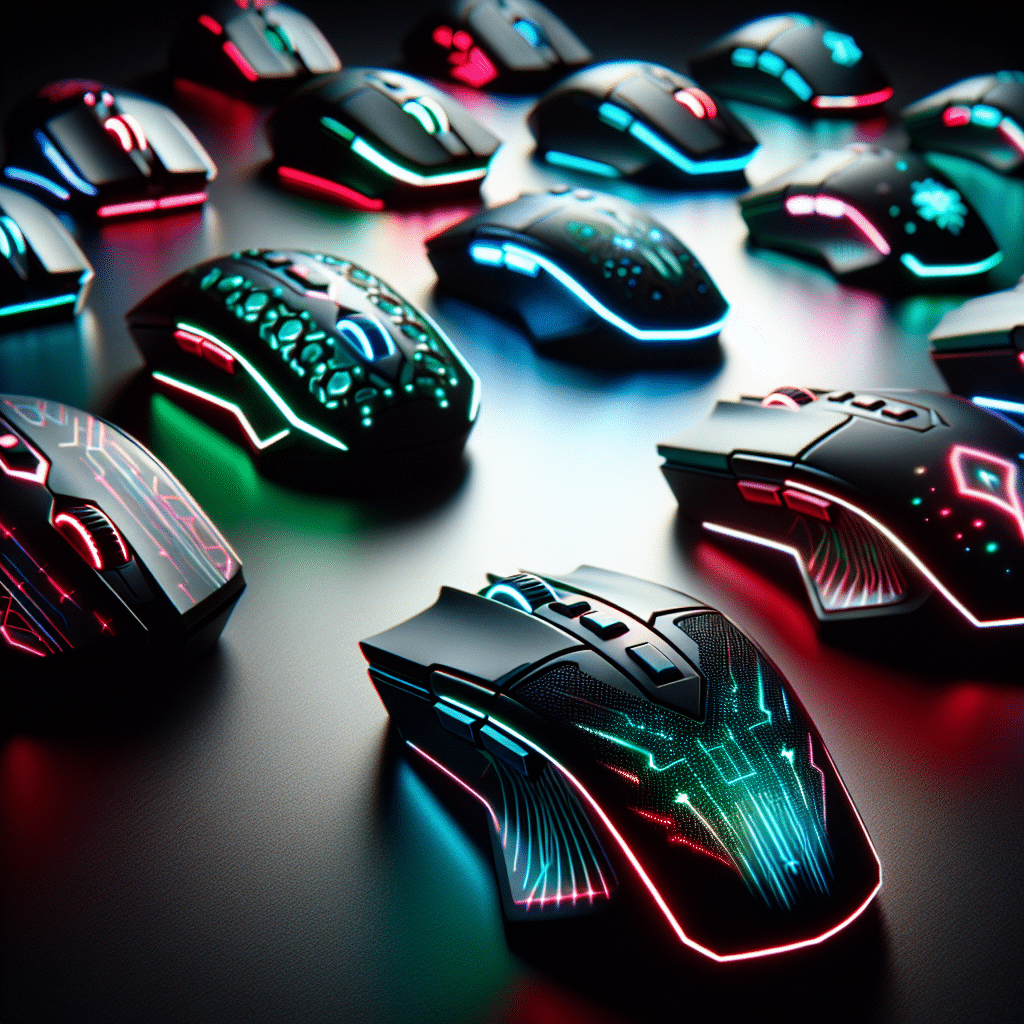Understanding RGB Lighting in Gaming Mice
The Rise of RGB Technology
RGB (Red, Green, Blue) lighting has become an integral aspect of gaming mice design. The task of gaming peripherals has evolved, and RGB lighting is no longer simply a flashy gimmick. It enhances the gaming experience, creates a personalized aesthetic, and can be tailored for competitive advantages.
The Functionality of RGB Lighting
RGB lighting in gaming mice serves multiple purposes. The illumination can provide visual feedback through colors and effects, allowing gamers to immerse themselves in their virtual environments. These lighting effects can indicate various statuses, such as low battery levels, DPI (dots per inch) changes, or even notifications from gaming software.
-
Customizing Experience: Gamers can customize their mice with various colors and patterns to develop a unique identity. This can result in a cohesive look if the mouse is part of a larger RGB setup, contributing to an aesthetically pleasing gaming environment.
-
Feedback Mechanism: Visual cues enhance responsiveness; for instance, a red light could trigger when a connection is lost or a green light when commands are executed correctly. This real-time feedback can fine-tune gameplay dynamics.
-
Gaming Profile Indicators: Different gaming profiles can be assigned different colors, allowing quick recognition of settings for various games or styles without the need to browse through menus.
Popular Lighting Effects
The variety of RGB effects on gaming mice offers excitement and customization:
-
Static Color: A straightforward mode, where the mouse remains illuminated in a single color of choice, providing a constant visual presence during gaming.
-
Breathing Effect: This effect slowly fades the light in and out, creating a breathing illusion. It’s a calming effect, ideal for those who prefer a softer illumination.
-
Color Cycling: A dynamic effect cycling through a spectrum of colors, allowing for vibrant visual stimulation and aesthetic appeal.
-
Wave Patterns: Various wave effects create a flowing motion, simulating water or light waves, often synchronized with other RGB components.
-
Reactive Lighting: This mode provides immediate feedback based on user actions, lighting up based on clicks, movements, or specific game events, adding to the immersive gaming experience.
Technical Considerations
When choosing a gaming mouse with RGB lighting, several technical factors are essential:
-
Software Integration: Comprehensive software support enables full customization capabilities. High-quality RGB lighting software provides users options to modify effects, synchronize with other devices, and even adjust colors based on in-game situations.
-
Bluetooth vs. Wired: RGB lighting may drain battery life in wireless mice. However, many manufacturers optimize power consumption to balance aesthetics and performance. Wired mice typically have constant illumination without battery worries.
-
DPI Settings and Performance: While RGB lighting effects do not impact mouse performance directly, customization options allow gamers to establish a connection between performance metrics (like DPI settings) and visual feedback, enhancing coordination in fast-paced gaming.
Advantages of RGB Lighting in Competitive Gaming
For competitive gamers, RGB lighting impacts more than just aesthetics. Enhanced visibility and customization can serve as a tactical advantage:
-
Quick Identification: In high-pressure situations, rapid recognition of mouse settings can be crucial. Unique RGB profiles help players instantly determine their settings, maintaining focus on gameplay.
-
Psychological Edge: Engaging and visually appealing setups can boost mood and comfort, potentially improving player performance.
-
Team Coordination: In multiplayer games, synced RGB lighting among teammates can establish a unified aesthetic and serve as silent communication methods, signaling strategy changes or alerts without disrupting the flow of play.
Concerns and Criticism
While RGB lighting offers numerous benefits, there are criticisms and concerns shared within the gaming community:
-
Distraction: Some gamers find excessive RGB lighting distracting and prefer a minimalist design. Personal preference plays a significant role in distinguishing between beneficial and distracting effects.
-
Durability: Concerns have been raised about the longevity of RGB lighting components. Continuous use can potentially lead to failures or diminishing brightness over time, necessitating quality assurances from manufacturers.
-
Pricing: RGB lighting features often increase the cost of gaming mice. For budget-conscious gamers, these added features may not justify the higher price tag compared to simpler models.
The Future of RGB in Gaming Mice
As technology evolves, the possibilities for RGB lighting in gaming mice are boundless:
-
Enhanced Synchronization: Future developments may see even tighter integration of RGB lighting across all peripherals, enabling synchronized visual effects across keyboards, headsets, and monitors.
-
Adaptive Effects: Incorporating AI could allow mice to adapt their lighting based on the gaming environment, reacting to actions or changes in gameplay dynamically and enhancing immersion.
-
Wearable Technology Integration: Connecting RGB lighting in gaming mice to wearable technology could provide enhanced functionality, such as biometric feedback influencing visual effects.
Conclusion
The evolution of RGB lighting in gaming mice reflects the changing landscape of gaming hardware. With an array of customizable options, it not only serves aesthetic purposes but also enhances the gaming experience and performance capabilities. As gamers continue seeking new levels of immersion and personalization, RGB lighting will undoubtedly play a significant role in shaping the future of gaming peripherals.
